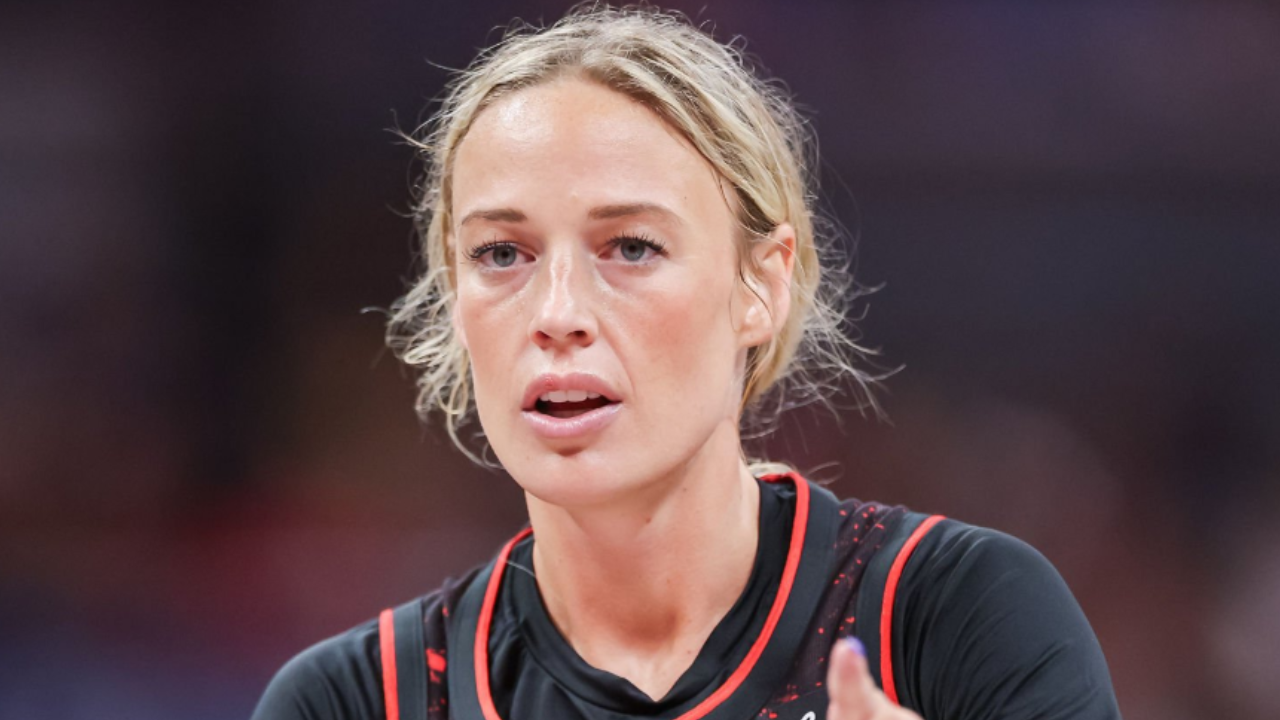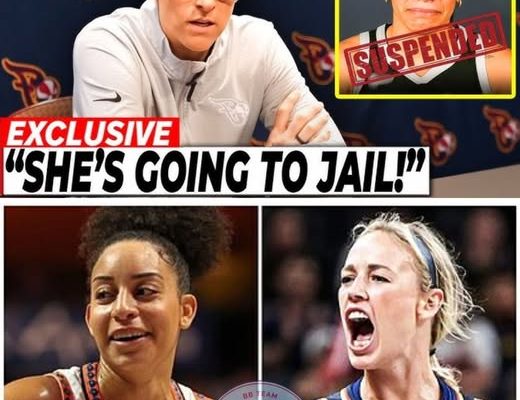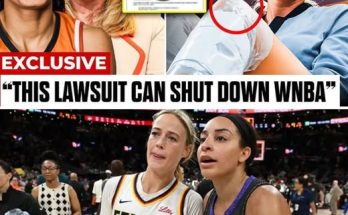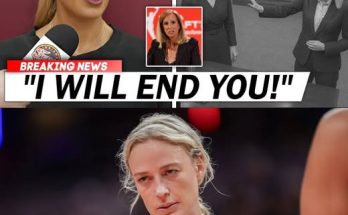Sophie Cunningham’s Collapse, Bria Hartley’s Shadowy Reputation, and the Dangerous Game the WNBA is Playing

It didn’t look like a stumble. It didn’t look like a clumsy fall. What happened to Sophie Cunningham against the Connecticut Sun was something far stranger—and far more sinister.
Bria Hartley, a player with a reputation for reckless fouls, threw her body directly into Cunningham’s planted knee. The result was devastating: Sophie crumpled to the floor, screaming in pain, and had to be helped off the court. Her season? Over.
But this wasn’t just another injury. It was a targeted demolition—and its implications could reshape the WNBA.
A Bizarre, Unnatural Collision
The replay tells the story. The ball was nowhere near Sophie Cunningham when Hartley suddenly collapsed backward, colliding straight into her leg. There was no basketball logic to the move, no reason for Hartley to even be in that spot.
To casual fans, it might look like bad luck. To those paying attention, it looked like a message.
This wasn’t about stopping Sophie. It was about removing the one player standing between Caitlin Clark—the league’s new golden star—and an entire league of defenders eager to rough her up.
Bria Hartley: Reputation Precedes Her
To understand why fans exploded with anger, you have to look at Hartley’s record. This wasn’t her first brush with controversy.
Weeks earlier, Hartley was caught yanking Angel Reese down by the hair.
Before that, she sent Becca Allen crashing to the floor with a reckless pull.
Other clips show her instigating scuffles and plays that cross the line from tough to dirty.
Each incident alone could be chalked up to aggression. Taken together, they form a disturbing pattern. And Sophie Cunningham was just the latest victim.
Sophie Cunningham: The Protector
Cunningham wasn’t just another player in Indiana’s rotation. She was the Fever’s enforcer, the firewall between Caitlin Clark and defenders who’ve been treating her like a human pinball all season.
Whenever Clark took a cheap shot, Sophie was the first one in the offender’s face. She embraced the role of protector, villain, and tone-setter. She made opponents think twice before targeting Clark.
Now, that shield is gone. And every team in the league knows it.
Caitlin Clark, Exposed

The unspoken strategy against Clark has been clear since her debut: hit her. Wear her down. Push the limits of physicality and dare the referees to call every foul.
Sophie Cunningham was Indiana’s answer to that blueprint. With her sidelined, there’s no one left to stand guard.
The fear among Fever fans is simple: Clark is now open prey. Every drive, every cut, every possession carries the risk of the injury that could derail not just Indiana’s season, but the WNBA’s surge of momentum.
A League of Chaos
Where are the referees in all of this? Where is the league office?
Nowhere to be found.
Cunningham herself was slapped with a technical earlier in the same game—for protesting an obvious foul that went uncalled. Meanwhile, Hartley’s knee-dive into her leg went unpunished. It’s a snapshot of the WNBA’s current crisis: obvious fouls ignored, dangerous play rewarded, and players penalized for daring to speak up.
Commissioner Cathy Engelbert continues to praise the “physicality” of the league as a sign of growth. But fans see the truth: this isn’t toughness. It’s chaos.
The Legal Pandora’s Box
There’s another dimension to this saga—and it could change sports forever.
What happens when an on-court play is so far outside the bounds of basketball that it starts looking like workplace assault? If Sophie Cunningham—or any other injured player—chose to sue for damages, lost salary, or medical costs, it could set a precedent unlike anything the WNBA has faced.
Players would no longer need to rely on officials or league discipline. They could go directly to the courts. And suddenly, reckless enforcers like Hartley wouldn’t just worry about suspensions—they’d worry about financial ruin and legal records.
Lessons from the NBA’s Past
The NBA has seen this movie before. In the late 1980s and early 1990s, the Detroit Pistons’ “Bad Boys” made life miserable for Michael Jordan and other stars. Clotheslines, hip checks, and body slams became routine.
Eventually, the league realized that letting its most valuable stars get brutalized was bad business. The result? The flagrant foul system, harsher suspensions, and a clear priority on protecting players. The NBA flourished, its stars extended their careers, and the product improved.
The WNBA now faces the same crossroads. Will it learn from history, or repeat it?
Fans Are Turning
The WNBA is enjoying unprecedented growth thanks to Caitlin Clark. Ticket sales are skyrocketing. Games are being moved to bigger arenas. Ratings are breaking records.
But those new fans didn’t tune in to watch WWE-style takedowns. They tuned in for basketball. And what they’re seeing instead—a league that looks unable to protect its stars—is pushing them away.
The league’s brand, carefully cultivated as progressive, empowering, and unified, is being exposed as hollow. Fans aren’t buying slogans when the product on the floor looks like chaos.
The Dangerous Road Ahead
If the WNBA refuses to clamp down, the consequences could spiral. Teams will start signing their own “enforcers” to protect stars like Clark. The game will devolve into an arms race of retaliation, each hit answered with a harder hit, each foul escalating into something more dangerous.
Instead of evolving into a celebrated professional league, the WNBA risks regressing into a brutal war of attrition.
And it all began with one “fall” that didn’t look like a fall at all.
A League at a Crossroads
Sophie Cunningham’s season-ending injury wasn’t just bad luck. It was the logical outcome of a culture the WNBA has allowed to fester—a culture where dangerous play is tolerated, officials are inconsistent, and leadership is silent.
Now, the league has a choice. Protect its stars, enforce real rules, and secure its future. Or keep pretending this is “just physical basketball” until the golden era it’s been waiting for crumbles under the weight of reckless hits and shattered knees.
Because if Caitlin Clark goes down next, the WNBA won’t just lose a player. It might lose everything.



